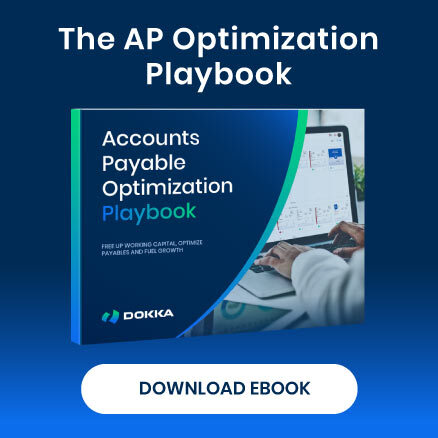As businesses move towards more efficient digital processes, CFOs are increasingly being called upon to lead their organizations and accounting departments through periods of digital transformation.
No longer is it enough for finance chiefs to simply crunch numbers and report on financial performance – they must now also have a clear understanding of how technology can be used to enable growth and efficiencies within their company. Doing so can require up-to-change leadership and management skills, as well as up-to-date knowledge in fields like software development, system implementation, and big data analytics.
Whether it’s developing a strategic plan for digital transformation, overseeing the implementation of new solutions, or monitoring performance against KPIs, the CFO needs to be on top of all things digital.
In this post, we’ll take you through the few most important questions and answers that will help you understand the difficult choices CFOs have to make when future-proofing their organizations.
Key Questions about CFO’s Role in Digital Transformation
- What is the CFO’s role in digital transformation?
- What are the benefits of digital transformation?
- What are the risks associated with digital transformation?
- How can the CFO help mitigate risks associated with digital transformation?
- What are the challenges that the CFO may face when leading digital transformation?
- How can the CFO ensure that digital transformation is successful?
- What metrics should the CFO use to measure success when leading digital transformation?
- What are some common pitfalls that the CFO should avoid when leading digital transformation?
1) What Is the CFO’s Role in Digital Transformation?
The main role of the CFO is to ensure that the financial resources of the company are best used to achieve its strategic objectives. Ultimately, the CFO must ensure that the digital transformation is successful and drives long-term value for the company.
It is the responsibility of the CFO to ensure that investments are made wisely and that risks are properly managed. They also play a key role in selecting and implementing new technologies, as well as measuring the results. This requires working with other members of the executive team to develop a strategy and roadmap, and implement a digital transformation plan.
The CFO is responsible for monitoring the performance of the plan and ensuring that it remains on track. As digital transformation can be a complex and multi-faceted process, the CFO must be a savvy and experienced leader to ensure its success and be able to adapt the plan as needed in response to changing conditions.
2) What Are the Benefits of Digital Transformation?
Digital transformation is one of the most important initiatives that a company can undertake.
While the benefits of digital transformation are numerous, some of the most important include increased efficiency, enhanced customer experiences, and new revenue streams. As the CFO of a company, it is your responsibility to ensure that your organization is exploiting the full potential of these benefits.
To begin with, digital transformation can help to increase efficiency by automating manual processes and reducing errors. It can help you to gather and analyze data more effectively, making it easier to identify areas of improvement. Many manual processes can be automated, such as data entry, invoice processing or approval routing, to name a few.
In terms of enhancing customer experiences, digital transformation can help you to better understand your customers’ needs and preferences and develop targeted solutions. Finally, digitization can also open up new revenue streams by enabling you to offer new products and services or reach new markets.
3) What Are the Risks Associated with Digital Transformation?
Today, almost every business strives to keep up with the latest technologies and trends and is increasingly turning to digital solutions to improve efficiency and competitiveness, but it is not without risks.
One of the biggest risks associated with digital transformation is data security. As businesses collect and store more data, they become more vulnerable to cyber-attacks. The CFO must cooperate with the company’s IT department to ensure that data is properly protected.
Other risks include compliance challenges as businesses strive to meet new regulations, the possibility of financial fraud, and the inability to fully capitalize on new opportunities if they do not have the right skills and resources in place.
4) How Can the CFO Help Mitigate Risks Associated with Digital Transformation?
While digital transformation can help organizations to become more agile and innovative, it can also expose them to new security threats and operational risks. This is where CFOs can play a critical role to help identify risks and ensure that adequate resources are in place to mitigate them.
For example, as a CFO you can help to mitigate these risks by working closely with the CIO to ensure that the resources are allocated to security and by developing robust contingency plans. You can also help to raise awareness of the risks among senior management and the board of directors, and work with the CEO and other senior leaders to identify and assess risks, develop mitigation plans, and monitor progress.
By taking a proactive approach to risk management, the CFO can play a vital role in ensuring that digital transformation is successful. In addition, CFOs can help to ensure that businesses can take full advantage of new opportunities by investing in the right people and technologies.
5) What Are the Challenges That the CFO May Face When Leading Digital Transformation?
One of the biggest challenges businesses face is managing the budget. Digital transformation can be costly, and the ROI isn’t always immediately clear. This raises the question: should you measure the ROI of every automation initiative? Our co-founder Eric explains this in detail in this video.
CFO’s role is to secure the financial stability of the company, so managing budget for digital transformation means it must be monitored and funds must be allocated wisely.
The CFO who leads the company’s transformation can expect potential disruptions to existing business models and must be prepared to manage them. For example, the introduction of new technology may render old methods of accounting obsolete. You must stay on top of the latest technology trends and developments to make sure that the company’s digital transformation initiative is on track.
6) How Can the CFO Ensure That Digital Transformation Is Successful?
First and foremost, it’s crucial to have a clear understanding of what digital transformation entails and why it is necessary for your organization. For instance, if the company aims to transform its accounts payable or financial close process, AP automation should be a top investment priority.
Once priorities are established, the CFO can collaborate with other members of the executive team to develop a strategy that maximizes return on investment (ROI). From there, it’s a matter of ensuring that proper resources are allocated and progress is monitored consistently.
To stay ahead and ensure success, having a comprehensive understanding of the organization’s data is paramount. This data should inform decision-making and drive meaningful change. A concise and well-defined data management strategy tailored to the organization’s needs and stakeholders is essential. Without it, achieving a successful digital transformation will be challenging.
7) What Metrics Should the CFO Use To Measure Success When Leading Digital Transformation?
Metrics and KPIs will largely depend on the type of transformation and the profile of the company. But generally, there are a few key metrics that CFOs can focus on.
First, they should track how quickly they’re able to roll out new technologies and processes.
Secondly, they should keep an eye on employee satisfaction levels, as happy employees are more likely to be productive employees.
And finally, they should monitor the financial impact of digital transformation initiatives, which includes both the direct costs of implementing new systems and the indirect costs associated with increased employee productivity. Tools such as AP automation ROI calculator can help you estimate the benefits of AP automation.
Some other metrics include, for example, customer satisfaction which can be measured through surveys or customer feedback forms, or website traffic that can be monitored using analytics tools such as Google Analytics.
9) What Are Some Common Pitfalls That the CFO Should Avoid When Leading Digital Transformation?
Digital transformation is a complex process that requires careful planning and execution. As such, there are several pitfalls that CFOs should avoid in order to ensure its success.
Here are the four most common ones and tips to handle them:
- Overlooking the financial impact of digital transformation
A common mistake is underestimating the resources and budget required for digital transformation. Insufficient investment in technology and talent can stall progress and limit the potential benefits of the initiative. Successful digital transformation demands adequate funding, so CFOs must carefully consider the financial implications before embarking on this journey.
- Failing to align digital transformation with business goals
Another frequent misstep is focusing solely on short-term financial gains while neglecting long-term strategic objectives. Digital transformation is an ongoing process that requires continuous improvement and adaptation. To ensure success, CFOs must maintain a strategic perspective, aligning initiatives with broader business goals. Without this alignment, digital transformation can become a costly and time-consuming endeavor with little to show for it.
- Underestimating the complexity of digital transformation
Digital transformation is not a one-size-fits-all solution—every organization faces unique challenges. CFOs should not underestimate the complexity of such initiatives and must be prepared for potential roadblocks. Thoroughly assess the organization’s current state, pinpoint areas for improvement, and develop a well-defined plan with realistic timelines. And remember, flexibility is key—unexpected challenges are inevitable.
- Forgetting about the people factor
One of the biggest mistakes is failing to involve key stakeholders early in the process. Digital transformation often requires significant changes in how employees work, so the human element must be a central consideration. Secure company-wide buy-in and ensure everyone understands the vision and their role in achieving it. Without widespread support, implementing new technologies and processes successfully will be an uphill battle.
Final Thoughts
While many industries have undergone a digital transformation and automated their business processes, the financial and accounting departments of companies have been relatively slow to change. However, this is starting to change as more and more businesses realize the benefits of digitizing their financial processes.
There are several advantages to digitizing financial and accounting departments: it can help to improve accuracy and efficiency by automating tasks that are traditionally done manually, it can help to reduce costs by eliminating the need for paper documents and storage, and it can help to improve decision-making by providing employees with real-time data analytics.
Here at DOKKA, we have just the right tool that can eliminate 80% of your accounts payable workload and help you manage your financial close process faster. If you want to learn more about CFO’s role in automating accounts payable, book a demo call with our amazing support team that will help you navigate digital transformation.




